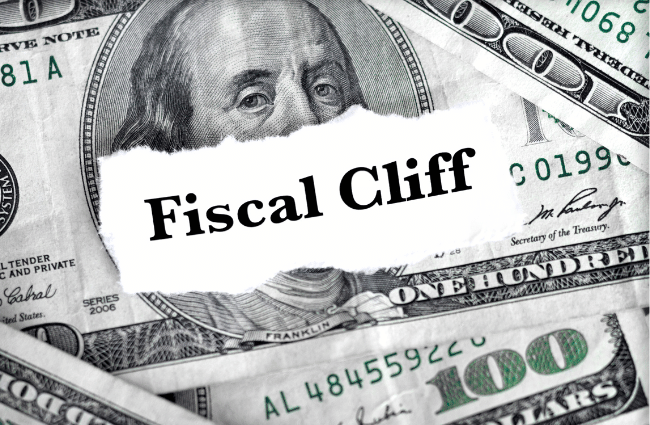Congress approved legislation in late December to avert billions of dollars in tax increases and spending cuts, helping the United States avoid what many were calling the ‘Fiscal Cliff.’ The resulting legislation is formally known as the American Taxpayer Relief Act of 2012. But other political and financial challenges remain, including how to tackle the short term debt ceiling issue and the longer term plan of attack to reduce the federal deficit which now stands above $16 trillion.
In the short term 2013 may be very similar to 2012 in terms of market volatility and performance, at least until some of the uncertainty surrounding the debt ceiling and related issues get resolved. The uncertainty could persist throughout the year if pro-longed debates occur on how to reduce $1 trillion annual deficits and the larger $16 trillion federal deficit. For the time being, let’s examine some of the highlights of the American Taxpayer Relief Act of 2012 and how they might impact your financial plan in 2013 and beyond.
Tax Increases
According to the Tax Policy Center, it is estimated that 77% of workers will see a tax hike as a result of the American Taxpayer Relief Act. Part of that increase is the expiration of the 2% tax cut on the employee portion of Social Security withholding, which goes back up to 6.2% from 4.2% where it has been the past two years. And while many economists are expressing concern about the short-term negative impact the extra 2% withholding may have on consumer spending, perhaps the bigger concern should be on the long-term negative consequences for the viability of Social Security with less revenue and higher payouts occurring over the last two years.
Initially seeking higher taxes on incomes over $250,000, Democrats had to settle on a higher income level. For individuals with incomes of $400,000+ and married couples with incomes of $450,000+ the top tax rates rises from 35% to 39.6%.
Capital gains and dividend taxes also increased for individuals making $400,000+ and couples earning $450,000+. The tax rate on capital gains and dividends increases to 20% for the high-earners, while it remains at 15% for everyone else.
Finally, limits on tax exemptions and deductions were reimposed for higher-income earners. The personal-exemption phase-out and itemized-deduction limits are now set at $250,000 for individuals and $300,000 for couples.
Favorable Outcomes of the Act
In spite of tax increases on a sizeable number of Americans, there were some positive measures contained in the American Taxpayer Relief Act of 2012. For unemployed Americans struggling to find a new job, federal unemployment insurance will now be extended for a full year, up from 26 weeks.
Congress finally addressed a long-standing problem with the alternative minimum tax. In the past, one-year “patches” were used to fix the problem of the AMT not being increased for inflation. As a result of the American Taxpayer Relief Act of 2012, the AMT is now permanently adjusted and indexed for inflation.
Another benefit of the act is the ability of employees to convert existing 401(k) plan assets to Roth 401(k) plans, regardless of whether the individual is eligible to take a distribution from the plan. The two caveats to this benefit are that the employer must offer Roth accounts, and the conversion is a taxable event to the plan participant.
Finally, the federal estate tax has also benefited from the new legislation. While the estate tax rate rises to 40% from 35%, the exemption amount has been raised to $5 million for individuals and $10 million for couples. This exemption amount will also be indexed for inflation in future years.
Financial Analysis
While the American Taxpayer Relief Act of 2012 did eliminate some short-term uncertainty, it did fail to fix some enduring concerns that will continue to plague the economy. All of the tax increases enacted are only projected to decrease the national debt by $650 billion, which is a far cry from $16 trillion. It is clear that significant spending cuts must be part of the deficit reduction plan, but it is also looking increasingly likely that additional tax revenues are in store either in the form of higher tax rates or the elimination of existing tax loopholes.
The legislation did, however, give a shot in the arm to financial markets as the act did eliminate a great deal of uncertainty for business owners, entrepreneurs and investors. It remains to be seen how quickly Congress and the President will tackle the remaining issues, however. Prolonged debate and political theatrics, like we’ve seen before on several occasions, may re-introduce uncertainty and stifle economic recovery and stagnate financial markets.

